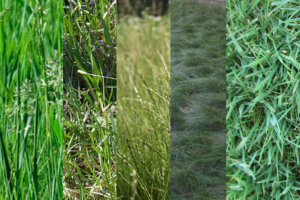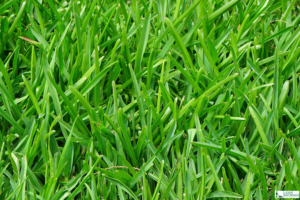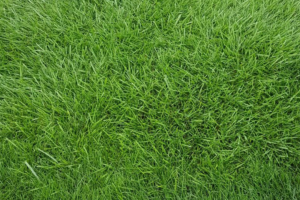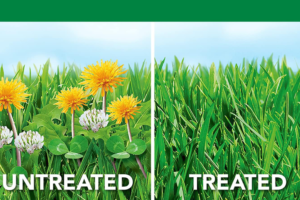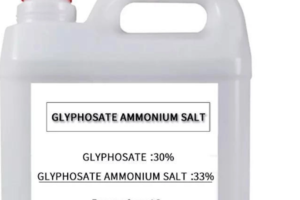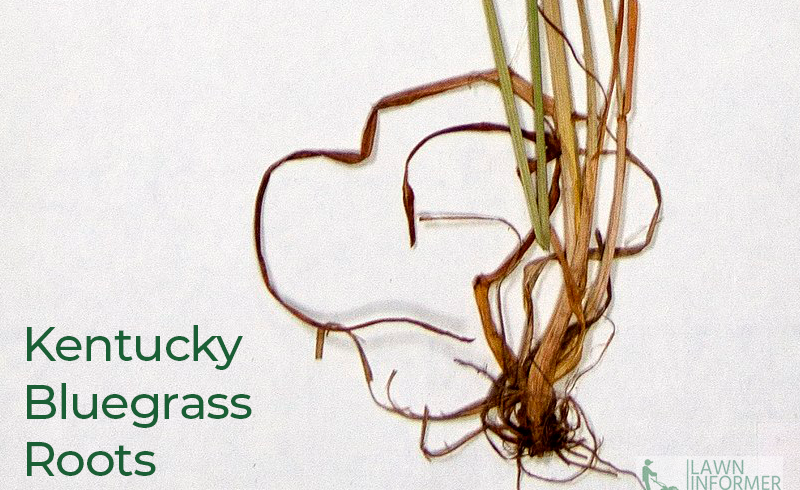
Introduction
The Magic Beneath Your Feet: Why Kentucky Bluegrass Stands Out in Your Lawn
Kentucky bluegrass often stands out as a favorite among the various grass types. But have you ever wondered why? The secret isn’t just in the blades you see above ground but also in the intricate network beneath your feet. Kentucky bluegrass doesn’t just thrive on the surface; it has a robust underground system that gives it resilience and a unique charm.
This grass type has been the darling of many landscapers and homeowners alike, not just for its vibrant hue but also for its adaptability and strength. Kentucky bluegrass handles it all gracefully, whether it’s the kids playing on a sunny day, a backyard BBQ, or the challenges of changing seasons. And the reason for this lies deep in its roots, quite literally!
Unveiling the Secret: How What’s Underground Affects the Beauty Above
When we admire a lawn, we often credit the visible part – the green expanse that feels soft under our feet. However, the real MVP (Most Valuable Player) of this green spectacle is the part we don’t see: the rhizomes. Think of rhizomes as the underground internet of the grass world, connecting different parts of the lawn, storing essential nutrients, and ensuring that the grass recovers quickly from any damage.
But it’s not just about the rhizomes. The health and vibrancy of Kentucky bluegrass are also influenced by the nutrients it absorbs, primarily carbon and nitrogen. Just as we need a balanced diet to stay healthy, grass requires a perfect balance of these nutrients to flourish. Too much or too little, and things can go awry. But when the balance is just right, the results are spectacular. In the following sections, we’ll delve deeper into this fascinating world beneath the surface and discover how you can harness this knowledge for a truly outstanding lawn.
The Unsung Hero: Rhizomes
What are Rhizomes, and Why Should You Care?
At the heart of every thriving lawn lies a network of rhizomes, the unsung heroes that work tirelessly beneath the surface. But what exactly are rhizomes? Imagine a system of underground stems spreading horizontally just below the soil. These rhizomes store essential nutrients and produce shoots and roots of their own. In essence, they’re the lifeline of your lawn, ensuring it remains lush and green, even when faced with challenges like foot traffic or harsh weather.

For homeowners and landscapers, understanding rhizomes is crucial. They’re the reason some patches of your lawn recover faster after a rough game of football or a heavy downpour. When you care for the rhizomes, you’re nurturing the grass above and ensuring your lawn’s long-term health and beauty. It’s like building a solid foundation for a house; the more robust the foundation, the more resilient the structure above.
The Hidden Network That Makes Your Lawn Resilient and Lush
If the grass blades are the visible stars of the show, rhizomes are the backstage crew, ensuring everything runs smoothly. This hidden network plays a pivotal role in making your lawn resilient. When parts of your lawn face stress, be it from drought, pests, or mowing, rhizomes jump into action, providing the necessary nutrients and support to help the grass recover. They’re why, after a dry spell, your lawn can bounce back to its vibrant self with just a bit of water and care.
Moreover, rhizomes contribute to the lushness of the lawn. Continuously producing new shoots and roots ensures your lawn remains dense and full, preventing unsightly bald spots. Rhizomes are essential for anyone dreaming of a carpet-like lawn that feels plush underfoot. By understanding and caring for this hidden network, you’re taking a significant step towards achieving the lawn of your dreams.
The Power Duo: Carbon & Nitrogen
The Dynamic Duo Feeding Your Lawn’s Roots
Every superhero has a sidekick, and in the world of lawns, Carbon and Nitrogen are the dynamic duos that power the lush greenery. Just as we need a mix of proteins, vitamins, and minerals in our diet, grass requires its own set of nutrients to thrive. Carbon and Nitrogen stand out as the primary sources of energy and growth for Kentucky bluegrass. Carbon, absorbed from the air through photosynthesis, provides grass’s growth energy. On the other hand, Nitrogen, typically absorbed from the soil, is essential for producing the vibrant green color we all love in our lawns.
For homeowners and landscapers, ensuring a proper balance of Carbon and Nitrogen is crucial. It’s about more than just watering the lawn or ensuring ample sunlight. The soil’s health, Nitrogen content, and the grass’s ability to undergo photosynthesis effectively can make a significant difference in how your lawn looks and feels.
Why a Balance Between Carbon and Nitrogen Can Make or Break Your Lawn’s Look
Balance is the key to nature, and it’s no different for your lawn. While both Carbon and Nitrogen are essential, an imbalance can lead to various lawn issues. Too much Nitrogen, and you might end up with a dark green lawn that grows too quickly, requiring frequent mowing. On the flip side, a lack of Nitrogen can result in a pale, yellowish lawn that’s less resilient to stress.
Carbon plays its part by ensuring the grass has the energy to grow and recover from damage. A lawn that’s efficient in photosynthesis will have a robust Carbon intake, leading to healthier, more resilient grass. Understanding this balance is essential for those looking to achieve the perfect lawn. It’s not just about adding fertilizers or ensuring ample sunlight; it’s about ensuring the grass has the right mix of nutrients.
Research Revelations
The Surprising Differences Between Various Kentucky Bluegrass Types
Kentucky bluegrass is a popular choice and more than just a one-size-fits-all. Recent research has unveiled subtle yet significant differences between various Kentucky bluegrass germplasms. Some types might be more resilient to foot traffic, while others might thrive better in shaded areas. These differences aren’t just on the surface; they’re rooted deep in their genetic makeup and how they utilize Carbon and Nitrogen.
For homeowners and landscapers, this revelation is a game-changer. It means there’s an opportunity to choose a specific type of Kentucky bluegrass tailored to the unique needs of their lawn. Whether it’s a backyard that sees frequent family gatherings or a front yard that’s mainly in the shade, there’s a Kentucky bluegrass out there that’s just right.
The Sweet Truth: How Sugars in the Roots Influence Your Grass’s Health
It’s not just about the nutrients; it’s also about how they’re used. Research has shown that sugars stored in the rhizomes play a pivotal role in the health and resilience of Kentucky bluegrass. These sugars, derived from Carbon, act as a reserve, helping the grass bounce back from stress, whether a dry spell or a pest attack.
For the everyday gardener, ensuring the grass has a healthy reserve of sugars can make all the difference. Regular watering, proper mowing, and ensuring the soil is rich in nutrients can help boost these sugar reserves, leading to a green lawn on the outside and robust from within.
Nitrogen: The Unsung Nutrient Boosting Your Lawn’s Green Factor
While Carbon’s role in grass health is often discussed, Nitrogen sometimes takes a backseat. However, research has highlighted its crucial role in giving Kentucky bluegrass its vibrant hue. Nitrogen produces chlorophyll, the pigment that gives plants their green color. A lawn with adequate Nitrogen will be greener and healthier, capable of photosynthesizing more efficiently.
This revelation underscores the importance of regular soil testing for homeowners. By ensuring the soil has the right amount of Nitrogen, one can ensure a lawn that’s lush and vibrant, making it stand out in the neighborhood.
Enzymes: The Tiny Workers in Your Lawn
The Little Helpers That Supercharge Your Grass’s Growth
Behind the scenes of every lush and vibrant lawn are enzymes, the tiny yet mighty workers that play a pivotal role in grass health. Think of enzymes as the microscopic managers in the soil, overseeing various processes that help the grass grow, recover, and thrive. From breaking down nutrients to aiding in photosynthesis, these enzymes ensure the grass has everything it needs to flourish.
For homeowners, understanding the role of enzymes can be a game-changer. While they might be invisible to the naked eye, their impact is evident in the health and vibrancy of the lawn. A soil rich in active enzymes can boost grass growth, enhance its color, and increase its resilience to stressors like drought or pests.
Why Some Grass Types Might Have an Edge Over Others
Research has shown that different grass types have varying levels of enzyme activity. This means that some grasses, thanks to their enzyme profile, might be better equipped to handle specific challenges. For instance, Kentucky bluegrass with a higher activity of certain enzymes might recover faster from foot traffic or be more drought-resistant.
For landscapers and garden enthusiasts, this insight can be invaluable. By choosing grass types with a favorable enzyme profile, one can ensure a beautiful but also challenging and resilient lawn. It’s like having a team of microscopic workers tirelessly working round the clock to ensure your lawn looks its best.
Making Sense of the Science
Breaking Down the Jargon: What This All Means for Your Backyard
Science can often seem complex and filled with jargon, especially when understanding what makes your lawn thrive. But don’t worry; it’s not as complicated as it seems! In simple terms, all the talk about rhizomes, Carbon, Nitrogen, and enzymes boils down to understanding what your grass needs to look its best. It’s about knowing that beneath the green surface lies a network of roots and nutrients working together to create that lush appearance.
For homeowners, caring for your lawn goes beyond watering and mowing. It’s about understanding the soil’s needs, choosing the right type of grass, and providing the nutrients necessary for growth. It’s a holistic approach that ensures your lawn isn’t just green for a season but thrives year-round.
Tips and Tricks: Using This Knowledge for a Lawn That’s the Envy of the Neighborhood
So, how can you use all this science to create a lawn that’s the talk of the town? Here are some practical tips:
- Choose the Right Grass: Different types of Kentucky bluegrass have unique characteristics. Pick one that suits your lawn’s specific needs.
- Balance the Nutrients: Ensure your soil has the right mix of Carbon and Nitrogen. Regular soil testing can be a great help.
- Care for the Rhizomes: Remember, the health of the underground network affects the beauty above. Regular aeration and proper watering can boost rhizome health.
- Embrace the Enzymes: Consider using organic fertilizers that enhance soil enzyme activity. It’s like adding extra helpers to your lawn care team.
By embracing the science behind lawn care, you’re not just growing grass; you’re cultivating a living, breathing ecosystem that adds beauty and value to your home. It’s a rewarding journey that transforms your outdoor space into a green haven.
The Roadmap to a Dream Lawn: Understanding and Harnessing the Power Beneath
Our journey through the world of Kentucky bluegrass has unveiled the intricate dance of nature that happens right beneath our feet. From the sprawling network of rhizomes to the delicate balance of Carbon and Nitrogen and the tireless work of enzymes, it’s clear that a dream lawn results from many factors working in harmony. But it’s not just about understanding the science; it’s about harnessing this knowledge to create a space that reflects care, dedication, and love.
For homeowners and landscapers, every decision, from the type of grass to the nutrients added to the soil, plays a crucial role in the outcome. It’s a reminder that while nature does much of the work, a touch of knowledge and care can elevate a lawn from ordinary to extraordinary.
Embracing the Science for a Greener, Lusher Outdoor Space
In conclusion, the secret to a lush, vibrant lawn lies in the blades of grass we see and the world beneath. By embracing the science of lawn care, we can make informed decisions that benefit the grass and the entire ecosystem. It’s about creating a space where nature thrives, where every blade of grass, every root, and every microorganism plays its part in painting a green masterpiece.
As you step out into your backyard or garden, remember that with every step, you’re walking on a marvel of nature, a testament to the wonders of life and growth. And with the proper knowledge and care, you can ensure that this marvel continues to shine, season after season.
Frequently Asked Questions
Why should I care about this grassy research?
This study dives into the secrets of how Kentucky bluegrass, a popular lawn choice, grows and spreads. It’s like understanding the magic behind a lush green lawn!
Who are the green thumbs behind this study?
A team of plant enthusiasts led by Fu Ran, Yajuan Yuan, and others embarked on this green journey to uncover the mysteries of grass growth.
What’s so special about these “rhizomes” you’re talking about?
Think of rhizomes as the underground network of grass. They store nutrients, help the grass spread, and are the unsung heroes of a thick lawn.
How did they uncover the grass’s secrets?
They planted three types of Kentucky bluegrass and watched them grow, measuring things like how many new shoots popped up and how they used food and nutrients.
Did any grass stand out in the growth game?
Absolutely! The ‘YZ’ type of grass was like the superstar, growing shoots and spreading 3 times faster than its cousin, the ‘AD’ type.
So, what’s the grass’s favorite food?
Grass loves a mix of sugars, starches, and certain nutrients. It’s like their version of a balanced diet, helping them grow and spread.
Were there any surprise ingredients in the grass’s diet?
Yes! Some fancy names like tryptamine and indole popped up. Think of them as the grass’s superfoods, boosting their growth.
How can I use this info for my lawn?
By understanding what grass loves, you can better care for your lawn, ensuring it’s green, thick, and the envy of your neighbors!

Bob Green, a passionate lawn care enthusiast with over two decades of landscaping experience, is this website’s proud owner. His vast knowledge of horticulture and dedication to helping homeowners maintain beautiful lawns are reflected in the valuable content he shares on his platform. John has always been interested in Agrostology.









